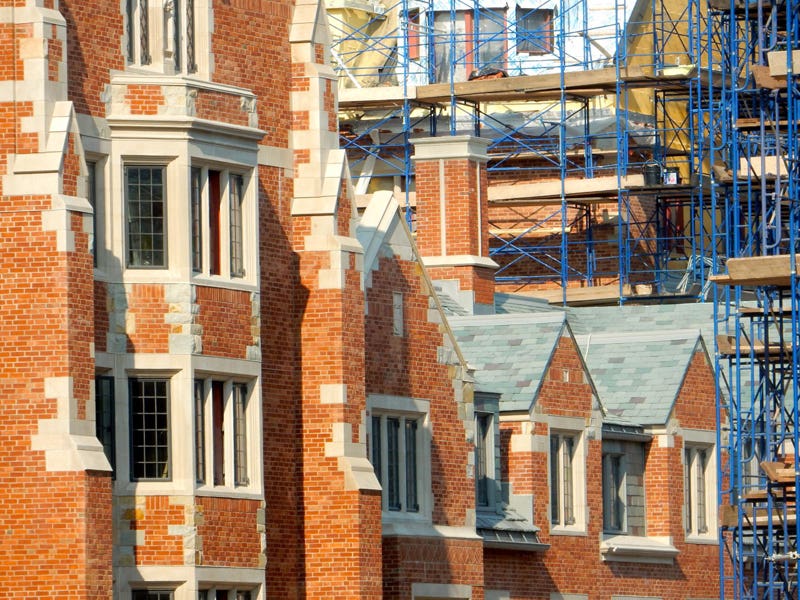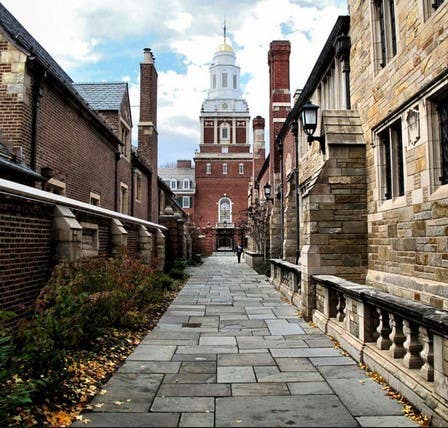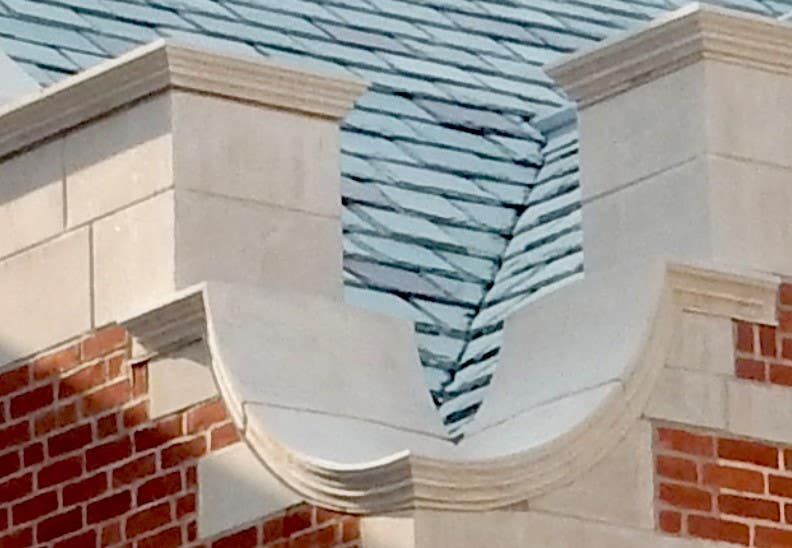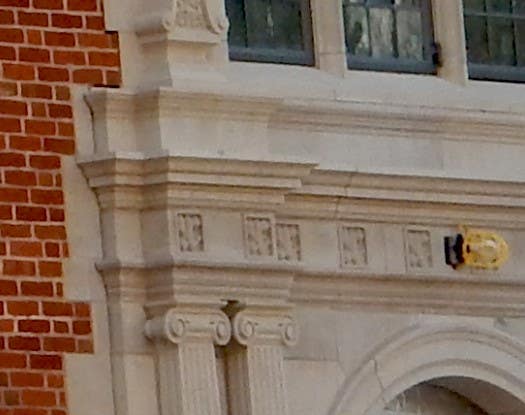
Projects
Stern Channels Rogers at Yale: New Quads in New Haven





Visiting New Haven the other day to attend the Palladio Awards gave me the opportunity to nose around the construction site of Robert A. M. Stern Architects’ two new residential quadrangles at Yale. They are in the Collegiate Gothic style of James Gamble Rogers. Fencing and the subtle warnings of hidden security guards kept my nosiness from getting out of hand. The construction has proceeded admirably. The two campuses are expected to open in the fall of 2017.
On my Architecture Here and There blog, I posted “Work on new Yale campus,” with photographs showing progress as of about two weeks ago. There was nothing to the post except the photos. Last month, in “Yale’s ‘edifice complex’?” I linked to a fine essay by architecture critic Duo Dickinson, who writes for the New Haven Register and the Hartford Courant. He said the new campuses will avail the benefits of an Ivy education to 800 more students a year. He adds:
The decision to hire Stern, by then-[Yale] President Rick Levin and a small group, signaled that the university did not want its first new residential colleges in 60 years to be "signature” fine arts statements like their immediate predecessors, Morse and Stiles colleges, built in 1961 by Modernist Eero Saarinen.
James Gamble Rogers and Yale
James Gamble Rogers (1867-1947) designed eight of the ten residential campuses built at Yale during the 1930s. Stern’s work at Yale tips his hat to the Collegiate Gothic of Rogers, the same Rogers who used subterfuge – workers splashing acid on stone – to achieve a venerable look sooner than time would have provided on its own. Even some classicists might blanche at the idea. I do not hear that Stern’s homage to Rogers goes that far. Still, these new colleges qualify as signature fine-arts statements far more elegant and ingenious than what Yale’s president said the school did not want to build.
Dickinson added further that Stern is local talent. He was born in Brooklyn and his firm is headquartered in New York City but he recently stepped down after almost two decades as dean of Yale’s school of architecture. I suppose that’s about as local as you can get. He also got his master’s in architecture at Yale, in 1965.
For these two residential campuses, named Anna Pauline Murray (’65 JSD) College and Benjamin Franklin College, Stern is listed on the RAMSA website as one of three project partners, joined by Melissa DelVecchio and Graham S. Wyatt. The project manager is Jennifer Stone. Dimeo is the general contractor.
The two campuses will fill 6.7 acres south of the Ingalls Rink and across the street from the crenellated Osborn Memorial Laboratories. Some 450 workers labor on-site daily. When I passed through, at around 6 p.m. on a Wednesday (actually the day after the awards program, which I missed), there seemed to be nobody around. I tried to breach the fence, like a diligent reporter, but a distant unseen voice cried out, “You can’t do that!”
Hand Carved Stone?
So, instead, through the chain-link apertures I poked the stubby lens of my camera. It is a relatively sophisticated point-and-shoot, a Nikon S9700 whose 30x telephoto can bring me right up close to the “first examples of hand-carved stone ornament” described by Yale’s latest “Construction Update” as already in place on some facades, notably along Prospect Street.
I could espy nothing clearly identifiable (by me) as hand-carved stone. But maybe I am too attuned to seeing cast stone, a concrete masonry that stimulates stone, and trying to decide whether it looks hand carved. Most stone detailing needn’t be hand carved to display a virtuosity impressive in our day and age. Along the Prospect facades I saw details and trim that seemed marinated in the sculptor’s art. A pair of cornice parapets that seemed to dip in gentle curvature as they met at a corner seemed even more hand carved than the small ornamental squared panels aligned above an Ionic pilastered entry arch.
I know someone will dispute this, but if a passerby can’t tell, how much difference does it really make whether a bit of architecture, acknowledged by all observers as beautiful, is rendered by hand or by machine? Stern is said to have chosen brick as the primary material here to keep costs down. But the brickwork that I saw looked like it had been shaped, colored and set by hand. No doubt hand work is morally superior to machine work, but if machine work looks like hand work, then … well, maybe there should be a Palladio for fine brickwork, be it real or Memorex.
For 30 years, David Brussat was on the editorial board of The Providence Journal, where he wrote unsigned editorials expressing the newspaper’s opinion on a wide range of topics, plus a weekly column of architecture criticism and commentary on cultural, design and economic development issues locally, nationally and globally. For a quarter of a century he was the only newspaper-based architecture critic in America championing new traditional work and denouncing modernist work. In 2009, he began writing a blog, Architecture Here and There. He was laid off when the Journal was sold in 2014, and his writing continues through his blog, which is now independent. In 2014 he also started a consultancy through which he writes and edits material for some of the architecture world’s most celebrated designers and theorists. In 2015, at the request of History Press, he wrote Lost Providence, which was published in 2017.
Brussat belongs to the Providence Preservation Society, the Rhode Island Historical Society, and the Institute of Classical Architecture & Art, where he is on the board of the New England chapter. He received an Arthur Ross Award from the ICAA in 2002, and he was recently named a Fellow of the Royal Society of the Arts. He was born in Chicago, grew up in the District of Columbia, and lives in Providence with his wife, Victoria, son Billy, and cat Gato.









